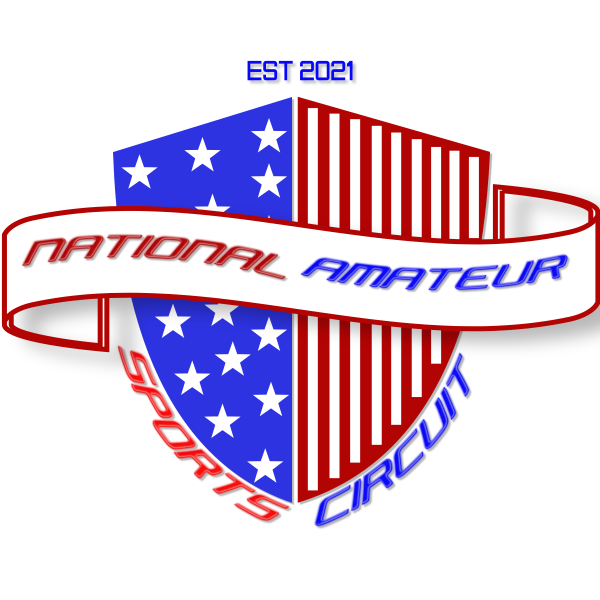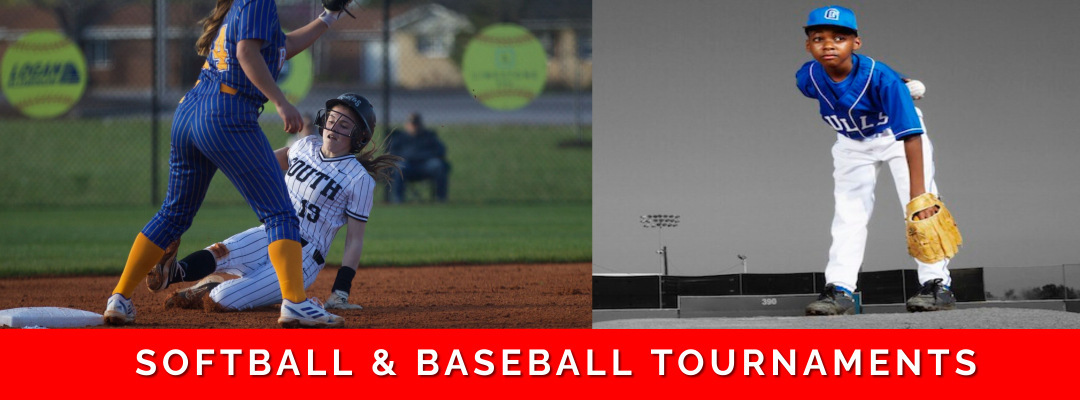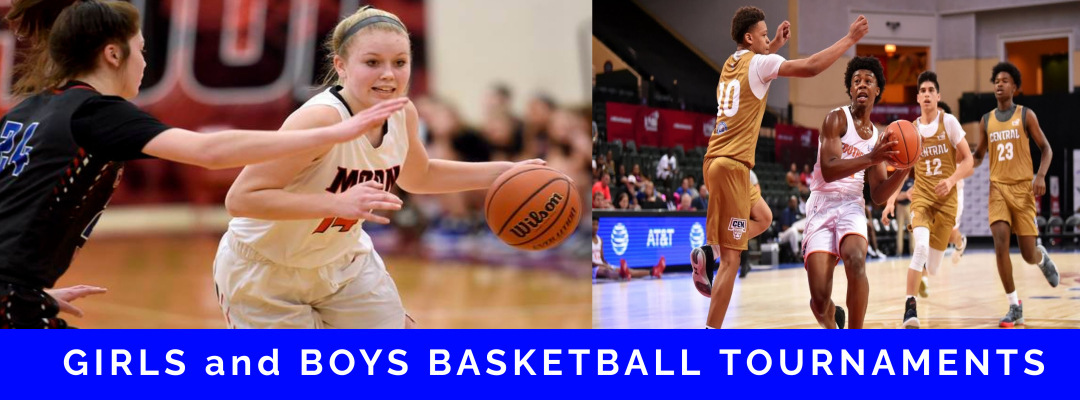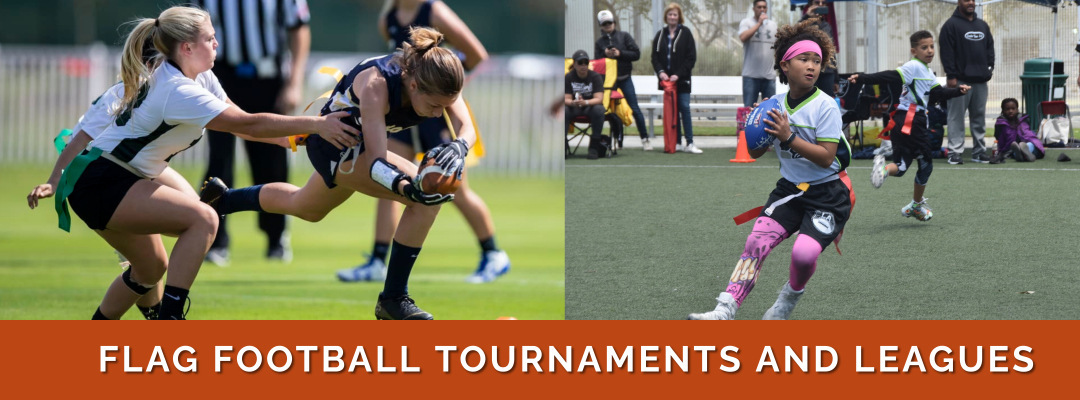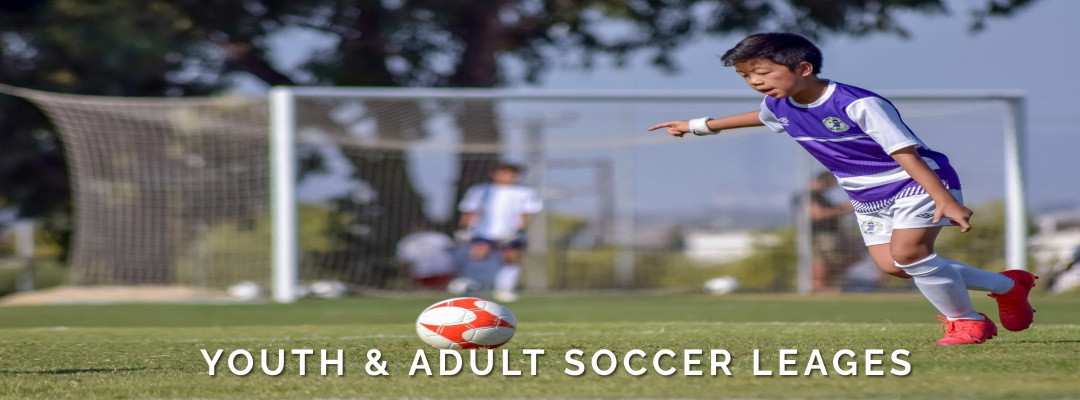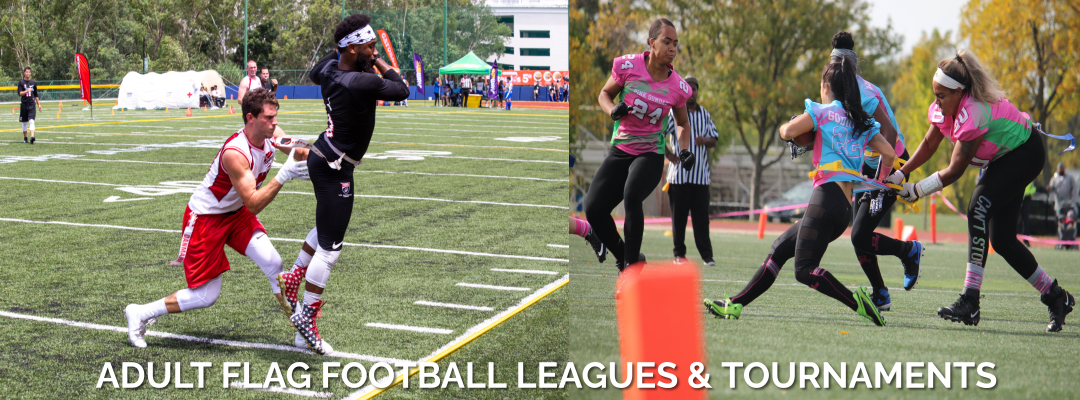WHATS DIFFERENT ABOUT NATIONAL AMATEUR SPORTS CIRCUIT/ COLLIER YOUTH SPORTS
RULES COMPARED TO LAST YEARS NFL FLAG RULES
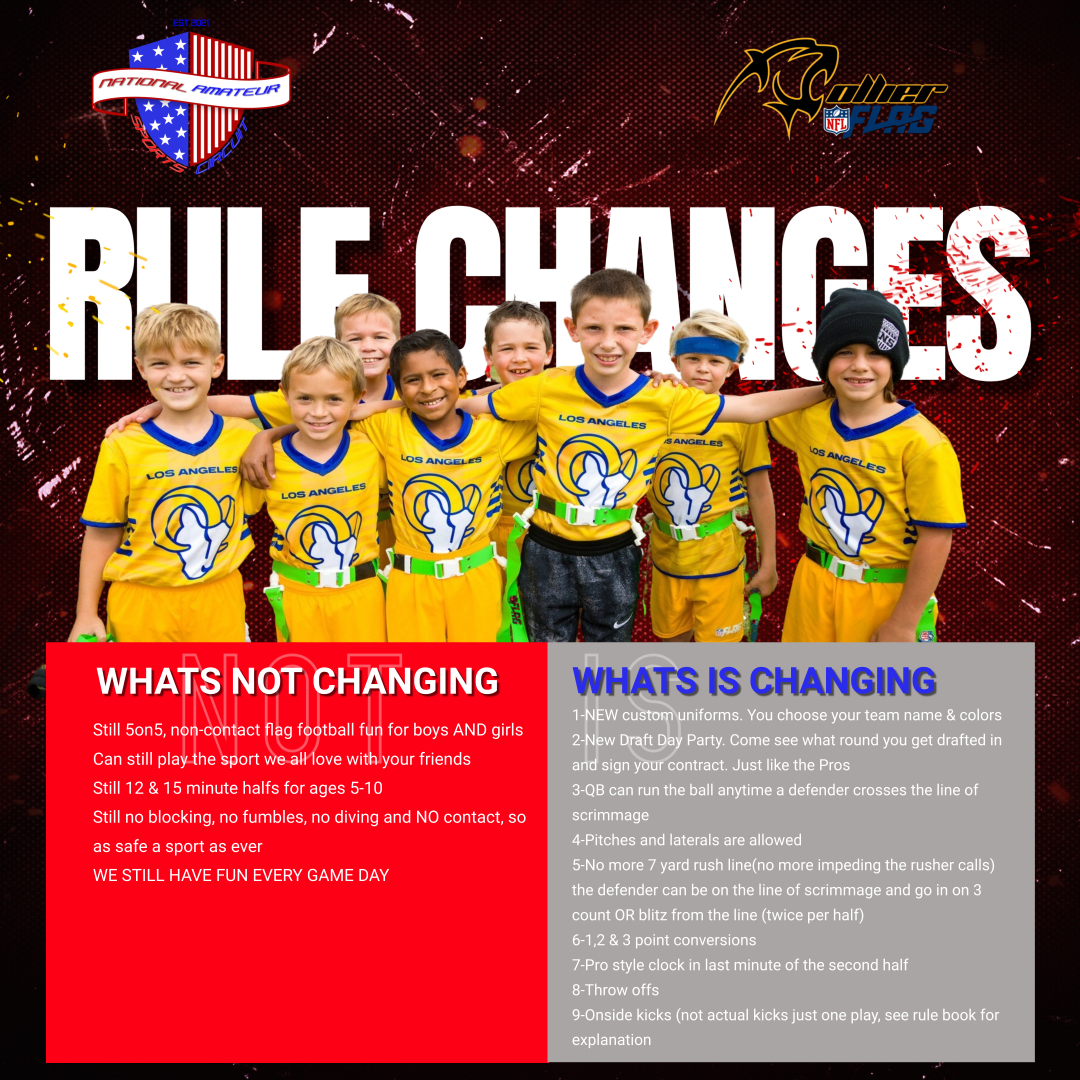
NASC/ COLLIER YOUTH SPORTS GAME RULES
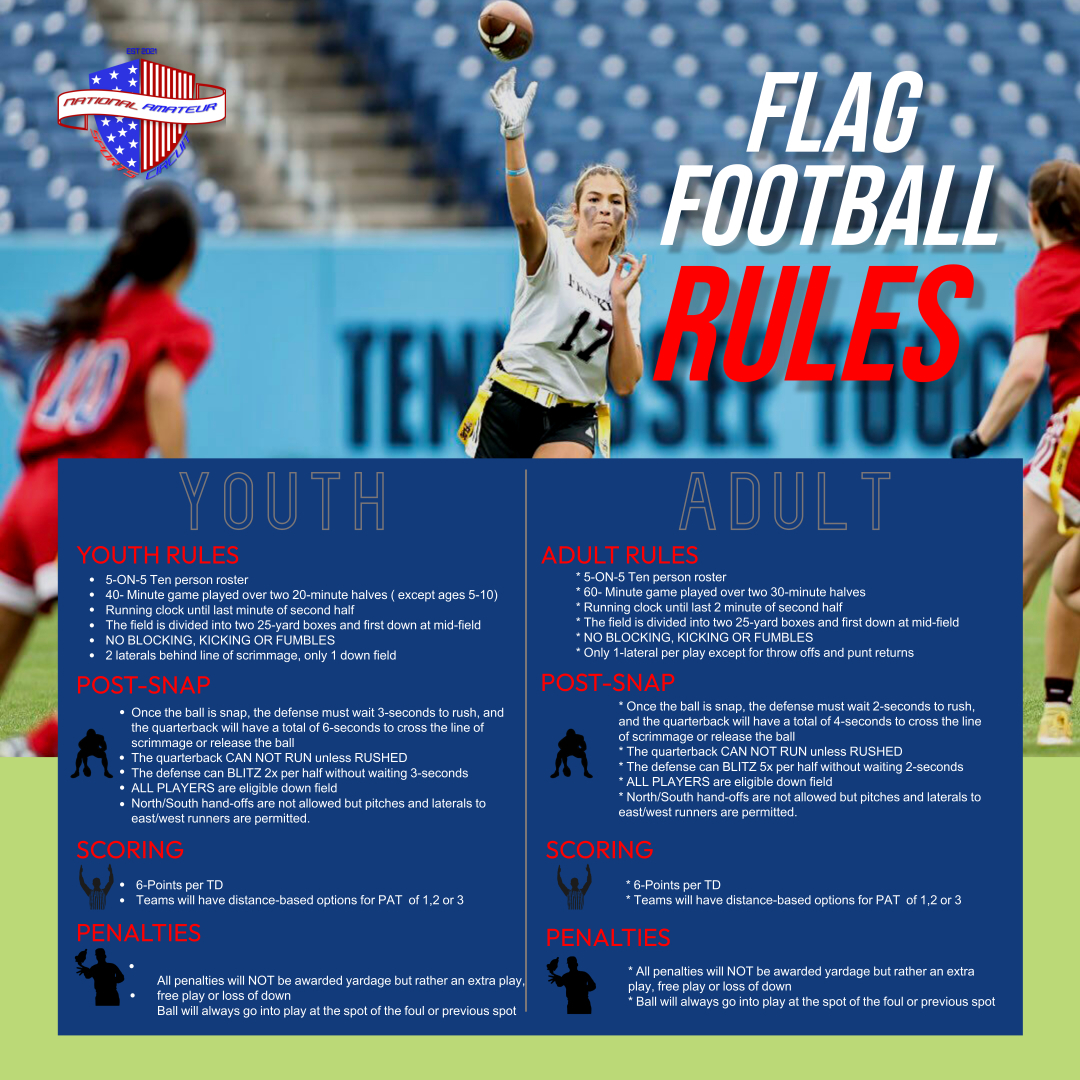
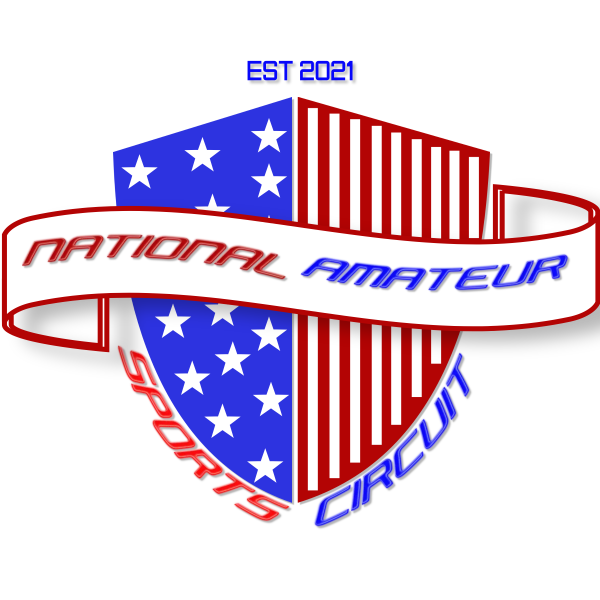
NATIONAL AMATEUR SPORTS CIRCUIT
NFL FLAG FOOTBALL LEAGUE TM
OFFICIAL YOUTH RULES
5v5
2023
TABLE OF CONTENTS
- Field
- Ball
- Rosters & Uniforms
- Definitions
- Time
- Overtime
- Scoring
- Pre-Game
- The Throw-Off
- Set of Downs
- Game Play and Formations
- Punts
- Possessions
- Miscellaneous Rules
- Penalties & Remedies
- Referees and Staff
- Referee Signals
1. FIELD
- 1.1. The playing field shall be 70 yards long, 50 yds goal to goal and 10 yd endzones. with a width of 30 yards.
- 1.2. The four intersections of Goal Lines and Sidelines must be marked at inside corners of the End Zone and the Goal Line by pylons. Pylons must be placed at inside edges of white lines and should not touch the Field of Play. Pylons should also be placed at the 2 intersections of the Sidelines and the 50-yard line.
- 1.3. All lines must be marked with a material that is not harmful to a person’s eyes or skin, and should be four inches wide, except for the Goal Lines, which should be eight inches wide.
- 1.4. All benches and other rigid features must be 10 yards or further back from the Out of Bounds line. If space permits these features may be placed further back.
- 1.5. The playing surface shall consist of grass or artificial turf.
- 1.6. The field will be as represented in Figure 1.
- 1.7. All markings or decorations on the field must not hinder the Players in any way.
- 1.8. On a field already marked with traditional tackle football markings, there are no additional markings required.
FIGURE 1: FIELD DIAGRAM
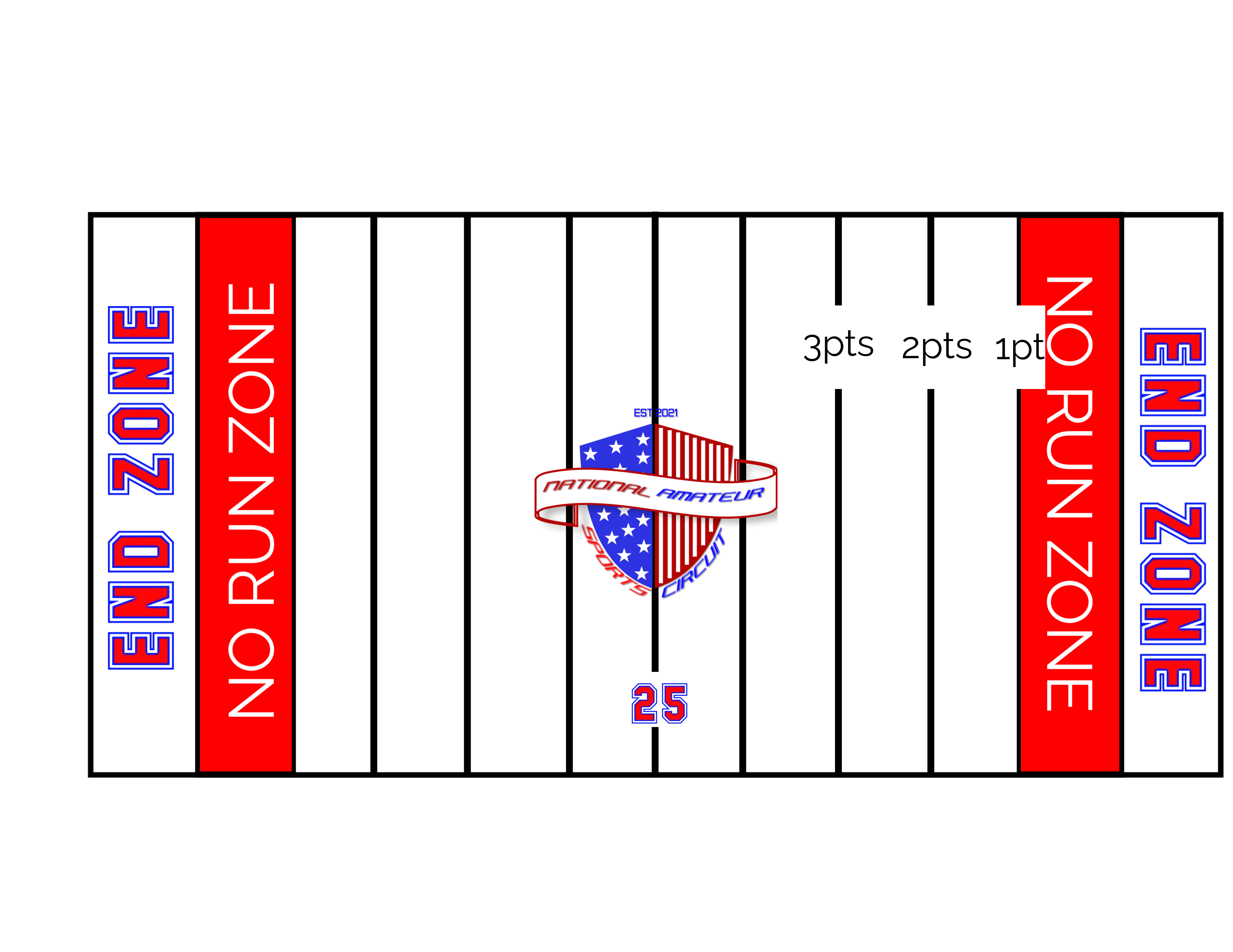
2. BALL
2.1. All balls will be provided by the NASC/ Collier Youth Sports (league only)
3. ROSTERS AND UNIFORMS
3.1. Each team will have 5 Players on the field, 4 players is acceptable. The opposing team can play with 4 or 5 when the opposing team has 4 players.
3.2. Teams can arrive 30 min before the start of a game to warm up and need 4 players to begin a game. If a game is not started 10 minutes after it is scheduled due to insufficient players, the result of the game is an automatic forfeit.
3.3. Each team can have a maximum of 10 Players.
3.4. Player uniforms must have numbers on the front and back of shirts.
3.5. Players must wear shorts with no pockets.
3.6. No jewelry is allowed.
3.7. Players cannot wear face coverings but are allowed backwards baseball hats and soft protective gear.
3.8. Only registered players and coaches are allowed on a Team’s sideline. (ALL TEAMS WILL BE GIVEN ONE WARNING FOR UNAUTHORIZED PERSON ON SIDELINE.
4. DEFINITIONS
4.1. Ball Ready for Play – A Dead Ball is Ready for Play when the ball is placed down by an
Official at the spot where the ball will next be put in play, and the Referee signals for the 30.
second Play Clock to start.
4.2. Blitz – On a Blitz, the Defensive team may rush the Quarterback as soon as the ball is.
Snapped. All Defensive players are eligible to Blitz. There is no limit to the number of
Defensive Players that can Blitz on a given play.
4.3. Boundary Lines – The Boundary Lines are the End Lines and the Sidelines and enclose the
field upon which the game is played.
4.4. Controlled Time – Controlled Time is the period of the game where Running Time is.
suspended per the rules set out in Rules 5.3, 5.4.4, 5.6.2, 5.9, 9.9.2, 15.27.
4.5. Conversion – A Conversion is a play that takes place after a Touchdown. The rules for
Conversions are set out in Rule 7.5.
4.6. Dead Ball – A Dead Ball is one that is not in play, where the runner is declared down or a
pass is declared Incomplete.
4.7. Defense – The team that starts the Down without the ball is the Defense.
4.8. Disqualified Player – A Disqualified Player is one who is prohibited from further.
participation in the game. The Referee will disqualify a Player who has received two different penalties that put his team Man Down.
4.9. Down – A Down is a period of action that starts when the ball is Snapped and ends when the ball is declared Dead. The Offensive team has four Downs, a Set of Downs, to achieve either a score or obtain a fresh Set of Downs by crossing the appropriate yard line.
4.10. End Lines – The End Lines are the lines at each end of the field and are perpendicular to the Sidelines.
4.11. End Zone – The End Zone is the rectangle formed by the Goal Line, the End Line, and the Sidelines. The Goal Line and the pylons are in the End Zone.
4.12. Field of Play – The Field of Play is the rectangle formed by the Goal Lines and the Sidelines.
4.13. First Half – The first 20-minute period of the game. (12 mins for ages 5-10)
4.14. First/Second/Third/Fourth Down – The initial Down in each Set of Downs is the First Down, the second is Second Down, etc. If the Offensive team fails to reach the Box they are required to reach after Fourth Down, the Defensive team starts a new Set of Downs at the spot where the Offensive Player was ruled down.
4.15. Force Out – A Force Out takes place when a Player attempting to catch a ball land Out of Bounds due primarily to the influence of contact with an opposing Player. A Force Out will be considered a catch at the point where the Offensive Player left the Field of Play.
4.16. Forward Pass – A Forward Pass is a ball thrown by an Offensive Player that travels to a point that is closer to the Defensive Team’s End Zone than the Offensive Team’s End Zone. Forward passes are not permitted on returns of Throw-Offs or Punts. 4.17. Foul – A Foul is any infraction of a playing rule for which a penalty is prescribed. 4.18. Free Down – A Free Down occurs when the Receiving Team is not given an opportunity to catch the ball or is tackled on a return. It also occurs when the Defense commits a penalty. whose remedy includes an automatic first down after the Offense has already gained a First Down on the play. The Free Down gives the Receiving Team a fifth opportunity to advance the ball to the next box and is played prior to First Down.
4.19. Free Play: A Free Play is a play where the team in possession of the ball can replay the Down or accept the outcome of the play.
4.20. Last man (free runner) – A Free Runner has possession of the football and would be deemed likely by the Officials to have scored in the absence of a tackle.
4.21. Fumble or Unintentional Stripped Ball – Any time a runner, on Offense or Defense, loses possession of the ball, either on his own or because the ball is stripped out, he will be considered down at the point where the ball hits the ground. In instances where the ball is unintentionally stripped by a Defensive Player and the ball does not hit the ground, only the team in possession of the ball can recover it. If recovered by the possessing team, they may continue the play fumble by offense and ball does not hit the ground, defense can recover live ball in the air. Note: Intentional swiping at or stripping of a ball in possession is a tackling foul. (See Rule 15.28)
4.22. Game Clock – The Game Clock keeps time for the entire game, in both the Running and Controlled Time segments of the game and is managed by the Timekeeper. Ideally, the Game Clock will be visible on all four sides of the field.
4.23. Go Clock – The Go Clock will start on the Snap at zero seconds (0) and count to three seconds and then count to six seconds. The Go Clock should be visible at each end of the field and should be either the same device as, or adjacent to, the Play Clock. If a Go Clock is not available, the count can be communicated verbally by an Official.
4.24. Goal Lines – The Goal Lines are the lines between the Sidelines that separate the End Zone from the Field of Play. The Goal Lines are vertical planes parallel to and 10 yards from the End Lines.
4.25. Handoff – A hand to hand transfer of the ball from one player to another.
4.26. Hash Mark – A Hash Mark is a mark of 4 inches x 2 feet and is used to measure each. yard line.
4.27. Incomplete Pass – An Incomplete Pass is a Pass that is not caught.
4.28. Interception – A pass caught by the opposing team is an Interception. The Defense must
obtain complete control of the ball in order to be ruled an Interception. Complete control is determined at the discretion of the Officials.
4.29. Lateral – A Lateral is a sideways or backwards Pass or Pitch from one Offensive Player to another. Laterals are permitted on all plays and points on the field, including Throw-Offs and Punts. Laterals that are dropped are treated as Fumbles and dead where the ball lands. Two laterals behind the line of scrimmage, and one down field on each offensive possession. One lateral on throw off returns.
4.30. League – The League refers in these rules to the Commissioner’s office of the American Flag Football League.
4.31. Line of Scrimmage – The Line of Scrimmage is the vertical plane of the yard line that passes through the forward point of the ball after it has been placed on the ground and made ready for play by the Officials.
4.32. Live Ball – The Ball is Live when it has been snapped from the Line of Scrimmage. The ball will remain Live until it is ruled Dead, and the Down is over.
4.33. Loss of Down – Loss of Down is a remedy for a variety of penalties in Flag Football. A team that is penalized Loss of Down must start a new play with one less Down remaining in the Set of Downs. For example, a team penalized for Loss of Down on 1st Down would start the next play as 2nd Down.
4.34. Man Down – A team is Man Down when one of their Players has committed an infraction that causes the Officials to send that Player off the field for 1 play.
4.35. Midfield – Midfield is the 25-yard line.
4.36. Muff - A muff is an "uncontrolled touch" of the football by a player on the returning team.
after it is punted/thrown-off and will be treated as a fumble. Therefore, the ball will be considered dead at the spot of the muff.
4.37. Offense – The team that starts the Down in possession of the ball is the Offense.
4.38. Opposing Territory – The area of the field between Midfield and the End Zone toward which a team’s Offense drives.
4.39. Out of Bounds – A Player is Out of Bounds when he touches a Boundary Line, or when he touches anything that is on or outside a Boundary Line, except a Player or an Official.
4.40. Out of Bounds Spot – Wherever an Offensive Player with the ball exits the Field of Play will be the spot of the next Down. The spot will be established by the position of the football that is furthest from the End Zone at the point where the runner crossed the Sideline.
4.41. Overtime is the game's third period played only if the score is tied at the end of the Second Half. The rules of Overtime are set out in Section 6.
4.42. Own Territory – The area of the field between Midfield and the End Zone away from which a team’s Offense drives.
4.43. Pass – A Pass is an act by a Player of directing the ball to a teammate in the air.
4.44. Play Clock – The Timekeeper will manage The Play Clock. Once the Officials put the ball in play and start the Play Clock, the Offensive team will have 30 seconds to snap the ball, or they will be guilty of Delay of Game. Ideally, the Play Clock will be visible on both sidelines.
4.45. Possession – A Possession is defined as a period where the Offense is awarded the opportunity to complete at least one Set of Downs.
4.46. Quarterback – The Quarterback is the Offensive Player who first touches the ball after the Center’s Snap.
4.47. Receiving Team – The Receiving Team position themselves on their own side of Midfield until the Throwing Team initiates the Throw-Off.
4.48. Running Time – Running Time is the period of the game where the clock stops only on Time Outs. The rules of Running Time are set out in Section 5.2 and 5.4.
4.49. Second Half – The second 20-minute period of the Game.
4.50. Set of Downs – See Rule 4.15 and Rule 10.
4.51. Sidelines – The Sidelines are the lines on each side of the field and are perpendicular to
the End Lines. The Sidelines separate the Field of Play from the area that is Out of Bounds. 4.52. Simultaneous Possession – Simultaneous Possession occurs when a Forward Pass is caught by Offensive and Defensive Players at the same time. If this is the case the ball is awarded to the offense.
4.53. Snap – The Snap is the act of removing the ball from the ground and delivering it to another Player on the Offensive team. The Snap must go through the legs of the Offensive Player delivering the ball. The defense is not allowed to intercept the ball snapped from center to quarterback on a blitz, the quarterback must always be able to get the snap from center.
4.54. Stationary Pick – A Stationary Pick is permissible only on plays from scrimmage and not during Throw-Offs. A Pick is the act by a Player of using his body position to impede the progress of a defense Player without using his hands or arms. For a Pick to be legal, the Offensive Player must establish his position before contacting a Defensive Player. Picks may only be set after a Player has possession of the ball.
4.55. Throw-Off – The Throw-Off rules are in Section 9 of the Rules. The Throw Off will start play at the beginning of each half and after each Conversion attempt.
4.56. Throwing Team – The Throwing Team throws the Ball to the Receiving team. The Player who is throwing the ball must throw the ball before he reaches the Line of Scrimmage. His teammates on the Throwing team must be touching the Line of Scrimmage when the Quarterback releases the ball. There is not a snap on Throwing plays. The throw off line of scrimmages for each age group are listed below.
- 4.56.1. 6U Division - no throw-offs.
- 4.56.2. 8U Division - 50 yd line
- 4.56.3. 10U Division - Own 15 yd line
- 4.56.4. 10U Girls Division - 50 yd line
- 4.56.5. 12U Division - Own 10 yd line.
- 4.56.6. 12U Girls Division – Own 15 yd line
- 4.56.7. 14U Girls Division – Own 10 yd line
- 4.56.8. 15U Division – 5-yard line
- 4.56.9. 17U Girls Division – Own 5 yd line.
- 4.56.10. 17U co-ed Division – Own goal line.
4.57. Touchdown – A Touchdown is a scoring play. The scoring team receives 6 points for a
Touchdown. Forward progress to determine a Touchdown is determined by the position of the front of the ball of the Player in control of the ball trying to enter the End Zone. In addition, a receiver must have both feet down inside the Field of Play with control of the football to score a Touchdown.
5. TIME
5.1. Game Duration: Unless tournament rules dictate otherwise, each game will be 40 minutes in duration, consisting of 2, 20-minute Halves. Ages 5-7 will be 24 minutes in duration with 2, 12-minute halves. Ages 8-10 will be 28 minutes in duration with 2, 14-minute halves.
5.2. Running Time: The game will be played under Running Time. The Game Clock will stop only for Team, Injury and Referee Time Outs. Running Time will be suspended in the last 1-minute of the Second Half.
5.3. Controlled Time: The last 1 minute of the Second Half will be played under Controlled time.
5.4. Starting and Stopping the Clock:
5.4.1 During Running Time the Game Clock will stop after any scoring play or penalty that occurs with 1-minute or less remaining in the first half or if the Game Clock runs down to 1 minute after a scoring play or penalty and will remain stopped during a Conversion.
5.4.2 The clock will restart on the throw off if person touches the ball on receiving team, if ball is not touched by receiving team or touched by team throwing off, the clock will start on the snap on first down.
5.4.3 1- min Warning: The Game Clock will not stop for a 1-minute warning in the First Half but will stop for a 1-minute warning in the Second Half.
5.4.4 During Controlled Time the Game Clock will stop if any of six conditions are met and restart on the next Snap or release of the subsequent Throw-Off:
- a) A Player in possession of the ball steps out of bounds.
- b) An attempted Pass is Incomplete.
- c) Change of possession.
- d) Scoring play.
- e) Conversion play.
- f) Penalty.
- g) A Team or Referee Time Out.
5.4.5 Penalty - If a Penalty is declined during Controlled Time, the Game Clock will restart on the Ready for Play whistle.
5.4.6 During Running Time the Game Clock will stop at the beginning of all Referee Time Outs and resume when the Referee restarts the Play Clock.
5.5. Time Out Length: Referee – 30 seconds or 1 minute; Between halves - 1 minute; Team - 1 minute unless the Referee chooses to extend; Between Regulation and Overtime (or subsequent overtimes) - 1 minute.
5.6. Injury Time Outs will last at least 1 minute and will be called by the Referee if he sees a player needs medical assistance.
5.6.1 Injury During Running Time, an injured player must leave the Field of Play, or their team forfeits one of their Time Outs.
5.6.2 Injury During Controlled Time or with less than one-minute remaining in the First Half, the injured player’s team will automatically forfeit a Time Out unless the injury was the result of an act that resulted in a penalty to the other team. In Controlled Time, if the injured player's team has no timeouts remaining, the opposing team can run the Game Clock for 10 seconds and the Game Clock will restart on Ready for Play Whistle.
5.7. Team Time Outs: Each team will get 2 Time Outs per half. Time Outs not called in the First.
Half will not carry over to the Second Half. Time Outs may be called by a player on the field and/or a designated sideline coach. A Team cannot call 2 Time Outs prior to a play. However, each team may call 1 Time Out prior to the same play.
5.8. The Play Clock: Will start when the Referee sounds the Ready for Play whistle and the Offense will have 30 seconds to start a new play. Failure to start a new play in the allotted time will result in a penalty for Delay of Game, resulting in Loss of Down.
5.9. 10-Second Run off: During controlled time, any penalty committed that stops the clock will be subject to a 10-second run off, at the option of the non-offending team. If the 10-second run off is accepted, the game clock will start on the Referee's ready for play whistle. If Game Clock was stopped at the time of the penalty, there is no runoff, and the Game Clock will start at the ready for play whistle. If there are less than 10 seconds remaining on the Game Clock and a runoff occurs, the game will be over.
6. OVERTIME
6.1. If the score of the game is tied after 2 halves, Overtime will be played. During Overtime, Team Time Outs are not allowed. The Game Clock will be turned off and each Team will have one possession to score a Conversion from their Opponent’s 5/10 or 15 yd line. If the score is tied after the first Overtime attempt, the process is repeated, teams have the option to go for 1/2/3 on every OT possession.
6.2. End of Field: Both Teams will defend the End Zone that was the target of the Game’s initial Throw-Off.
6.3. Blitz: In Overtime, each team will receive 1 Blitz for entire Overtime period(s). Conclusion: The team leading at the conclusion of Overtime wins the game. If the score is tied at the end of the first Overtime period, an additional Overtime period will be played. After the second Overtime period, if a winner has not been determined, each Overtime period will consist of one Conversion attempt of any value by each team until there is a winner. The alternating choice of possession order will continue.
7. SCORING
7.1. How: After the player retains possession of the ball, front of the ball must cross the Goal
Line to score a Touchdown.
7.2. Possession in the endzone: Prior to possession, a Player landing in the End Zone must have placed one foot or another body part (i.e., forearm, knee, shoulder) completely inside the field of
play.
7.3. Touchdown: Will earn 6 points.
7.3.1 Defensive TD: Interceptions may be returned for a score. The length of the return begins from where the ball is Intercepted and not the original Line of Scrimmage.
7.4. Safety: Will earn 2 points for the Defense if they pull an Offensive Player’s flag in his own End Zone while the Offensive Player has possession of the ball or if a Quarterback is in the
End Zone. Flag Guarding in the End Zone also results in Safety.
7.5. Conversion: After a Touchdown is scored, the ball will be spotted at the middle of the field
And the scoring team will earn extra points via a Conversion.
7.5.1 Point values - Conversions attempted from the: 5-yard line - 1 point; 10-yard line- 2 points; 15-yard line - 3 points.
7.5.2 If the Defense intercepts the ball and returns it to the Opposing End Zone, they will be awarded 2 points.
7.5.3 Any Blitz by the Defense during a conversion will count as one of its two blitzes for the Half.
7.5.4 A safety on a conversion – the appropriate team will be awarded 1 point.
7.5.5 Conversion PENALTIES:
7.5.5.1 If the Defense commits a penalty (other than DPI) during a failed conversion not starting at the 5-yard line (prior to a turnover) - the Conversion will be replayed with the ball spotted at the next closest Conversion spot while keeping the same point value.
7.5.5.2 If the Defense commits any penalty on a Conversion that starts at the 5-yard line (prior to a turnover) - the Conversion will be ruled successful.
7.5.5.3 EXAMPLE: A Defensive penalty on a 3-point Conversion will result in a replay of the 3-point Conversion from the 10-yard line. The next Defensive penalty would result in a 3-point Conversion from the 5-yard line and a subsequent Defensive penalty would result in 3 points awarded to the Offense.
7.5.5.4 Defensive Pass Interference in the end zone ON A CONVERSION: ANY point value attempt will result in the offense being awarded the ball at the 2-yard line with the same point value for the attempt.
7.5.5.5 Tackling or Intentional Holding a Free Runner during a conversion result in an automatically successful attempt for the converting team. If this occurs on a Defensive return, the Defense is awarded 2 pts no matter where the Conversion began.
7.5.5.6 Any penalty (other than tackling) committed by the Converting team during a Defensive return: will result in the Defensive team being awarded the ball with a new series of downs, at the 25-yard line.
7.5.5.7 Any penalty by the Converting team PRIOR to a TURNOVER OR Defensive return team AFTER a TURNOVER - will result in a failed conversion.
7.5.5.8 Clock runs- the game clock will continue to run if the score difference is greater than 18 in the last minute of second half.
8. PRE-GAME
8.1. Prior to the start time of the game, each team will send the team captain to the center of the field for a coin toss. The away team chooses either heads or tails before the referee tosses the coin into the air. The team that wins the coin toss can choose if they would like to start the game by receiving or executing a Throw-Off. The team that receives the First Half Throw- Off will Throw-Off to start the Second Half. The team that loses the coin toss which Goal Line they would like to defend on the initial Possession. After each Touchdown and Safety, the teams will change direction. The Second Half Throw-Off will be in the opposite direction as the First Half Throw-Off.
8.2. The team will also designate a (1) sideline coach who may call time-outs during the game.
9. THE THROW-OFF
9.1. Prior to the Throw-Off, the Receiving team can line up in any formation so long as none of their players are across Midfield before the ball is thrown. Except for the Thrower, the Throwing Team is not permitted to run up as the ball is thrown and must keep one foot on the throw yard line until the ball is released. The Throw-Off will occur at the beginning of the 1st and 2nd Halves and after any Touchdown or Safety (Unless the team elects to attempt an Onside Play).
9.2. A player from the Throwing Team will initiate a Throw-Off by throwing the ball from behind his team’s designated yard line based on division The Game Clock will be re-started, if necessary, when the ball is released by the Throwing Team.
9.3. Throw-Off Yard Lines
9.3.1. 15U: Throw off from the 5-yard line.
9.3.2. 12U: Throw off from the 10-yard line.
9.3.3. 10U: Throw off from the 15-yard line.
9.3.4. 8U: Throw off from the halfway line.
9.3.5. 6U: Offense will start at the 5-yard line (no Throw-Offs)
9.4. The Receiving Team, either by catching the ball in the air or picking it up from the ground, may advance any Throw-Off.
9.5. If the ball is caught by the Receiving Team and the Receiving Player elects to place a knee on the ground in the Receiving Team’s End Zone or the ball bounces from the End Zone beyond any Sideline or the End Line, the Receiving Team will start with a First Down at its own 5-yard line and must cross the 25 -yard line to receive a new Set of Downs. If the Receiving Team fails to pass the 25 yd line, then they will not receive a new Set of Downs
unless they can pass Midfield. This remains even after a penalty that results in an automatic First Down or Free Down.
9.6. If the Throw-Off initially hits the ground before the Receiving Team’s Goal Line, the ball may either be picked up and returned by the Receiving Team or downed by the Throwing Team.
9.7. Once downed by the Throwing Team, the result is a Dead Ball with the ball spotted where it was first touched.
9.8. If the Receiving Team muffs the ball on a fly or bounce, the ball will be spotted where it first contacted the Receiving Team.
9.9. If the Receiving Team drops the ball in the End Zone, the result of the play will be a Touchback.
9.10. If a player makes a catch outside the endzone and runs into the endzone and his flag is pulled that is a safety
9.11. Onside Play: In lieu of a Throw-Off, the Throwing Team can elect an optional play, an Onside Play. An Onside Play is directly equivalent to a Fourth Down play with Midfield as the line to gain for the Offensive Team and would start at the Throwing Team’s 5-yard Line. There is no onside play allowed unless behind in the 2nd half in the last minute of the game.
9.11.1. First Half Game Clock: if stopped under one minute, it will begin at the start of this play.
9.11.2. During Controlled Time: this is an untimed play, and the Game Clock will begin at the start of the next play from scrimmage.
9.12. After a Safety: If a team surrenders a Safety, the teams switch sides of the field and the team that surrendered the Safety must execute a Throw-Off from the 5-yard line on the opposite side of the field from where the Safety occurred.
10. SET OF DOWNS
10.1. The Offense will have one Set of Downs to advance the ball from one Box to the next. Once the Offense advances the ball from one Box into the next, they will receive a new Set of Downs.
10.2. After the throw-off the Offense must cross the 25-yard line to receive a new Set of Downs, unless the return passes Midfield, in which case the team will have 4 downs to score.
10.3. Spotting the Ball: On plays that end in between the Hash Marks, the ball will be spotted where the play ends. If a play ends outside the Hash Marks, the ball will be spotted in-line with the nearest Hash Mark. If the field does not have hash marks, the ball will be spotted in the center of the Field of Play.
11. GAME PLAY and FORMATIONS
11.1 Formations
11.1.1 Number of players: Each team will consist of a roster of 12 active Players, with a maximum of 5 Players on the field during any play.
11.1.2 Near the Center: The offense is allowed to line up in any formation, with any number of players on the LOS or in the backfield, players on the line of scrimmage must have at least 3ft between each player including the center (no bunch formations)
11.1.3 Player in the Backfield: Any player in the back field my take a handoff from qb, the center is only person who cannot take a direct snap from the QB, he is not allowed to touch the ball first on a run, he may take a handoff from another player that gets a handoff from qb first.
11.1.4 Defense: There is no required formation for the Defense. 11.1.5 The ball must be snapped between the center's legs.
11.2 Offensive Play
11.2.1 6 sec Go-Clock: The Quarterback has a maximum of 6 seconds to release the ball either by executing a forward pass, handoff or pitch on any given play. Failure to do so will result in a Dead Ball and placed back at the LOS. The Referee and/or the Go-Clock official will blow the whistle to signal the end of the play, and the result will be treated as the equivalent of a sack.
11.2.2 QB Advance: The Quarterback is not allowed to advance past the Line of Scrimmage without another Offensive player having Possession first unless the Defense crosses the Line of Scrimmage.
11.2.3 Motion: The Offense can have 1 Player in motion at any time, including when the ball is Snapped, so long as that player's motion is not toward the Line of Scrimmage.
11.2.4 The Blitzer is not allowed to intercept the snap from the center.
11.3 Eligible Receivers
11.3.1 All Offensive Players are eligible receivers. 11.3.2 There is no intentional grounding.
11.4 Defensive Play
11.4.1 The Defense is only allowed to cross the Line of Scrimmage by executing a Blitz, waiting for the Go-Clock to count 3 seconds OR if the Go-Clock is turned off due to a running play or Lateral.
11.4.2 The Go Clock is turned off as soon as the Quarterback releases the ball either forward or backwards.
11.4.3 Each Defensive Team can Blitz 2 times in each Half. If there is an offensive penalty when a blitz is used the defense will not be charged with a blitz. If there is a defensive penalty when a blitz is used the defense will still be charged with their blitz.
11.4.4 On an illegal flag pull or early flag pull if the receiver is the first person to touch the ball, then second flag must be pulled for the player to be downed.
11.5 Laterals
11.5.1 On Scrimmage Plays One Lateral per team per play is allowed downfield, two behind the line of scrimmage.
11.5.2 On Throw-Offs 1 Lateral is allowed during the Receiving Team’s return only.
11.5.3 After the snap, the first handoff behind the line of scrimmage from the QB to another player will not be considered a lateral.
11.5.4 Forward passes are permitted after Handoffs and Laterals as long as the ball and the passer has not completely crossed the Line of Scrimmage.
11.5.5 Laterals can be intercepted and returned.
12. PUNTS
12.1 Teams can punt the ball on 4th down regardless of position on the field.
12.2 If a team elects to punt on Fourth Down, they are electing to forfeit the play and the opposing team will start at their 5-yard line.
13. POSSESSION
13.1. A catch or interception is ruled complete as soon as a Player has control of the ball and one-foot touches completely inbounds, although both feet do not necessarily have to touch at the same time. If another part of a Player’s body hits the ground before his feet, not including hands, then the initial contact with the ground from that body part must be completely inbound. For avoidance of doubt, as soon as a Player is ruled Out of Bounds, the play is over, and a catch or interception shall be ruled complete if the above requirements are met.
13.2. If a Player loses possession of the ball, with or without the influence of the opposing team, when the ball hits the ground, the runner is considered to have had their flag pulled and the play is dead. The ball will be spotted either: where the runner loses control of the ball, if fumbled forward OR the spot where the ball hits the ground if the ball is fumbled backward. (Similar to the illegal lateral penalty)
13.3. Simultaneous Possession of a Forward Pass will be ruled to be a catch for the Offense regardless of the order of whose feet touch the ground first. Both players must complete the catch in-bounds otherwise the Pass will be ruled incomplete. If one player controls the ball in their hands before another player whether in the air or on the ground, the catch will not be considered simultaneous possession.
14. MISCELLANEOUS RULES
14.1. Sideline Personnel – 2 Coaches per team are allowed anywhere on the sideline between the 10-yard lines.
14.2. Players who fall to the ground - regardless of whether it was due to incidental contact from other players, when on the ground, a player in possession of the ball is considered down. 14.3. Loss of Down penalties - imposed on the Offense on Fourth Down result in change of possession at the previous Line of Scrimmage.
14.4. Offsetting Fouls - If penalties are called on both Teams during any play without a Lateral or Forward Pass being intercepted, the result is a replay of the Down or Throw-Off even if the penalties differ in severity. If an interception occurs during a play and there is no penalty on the intercepting team until after gaining possession, the interception will count, and the ball will be spotted with a First Down at the spot of the interception. However, if both the Offense and Defense commit penalties before an interception, the penalties will offset, and the play will be replayed.
14.5. Free Down - Any penalty committed by the Defense which would normally result in an automatic First Down that occurs after the Offense has gained a First Down on the play will result in a Free Down awarded to the Offense. For avoidance of doubt, DPI or similar penalties, by definition, occur before the Offense gains a First Down and are not applicable to this paragraph.
14.6. Foul during a Free Down - If by the offense, it will follow the remedies where the next down would be 1; If by the defense, the down shall be replayed unless an automatic first down is awarded by rule. (Ex: Flag Guarding by the offense on a Free down - the next down will be second (2nd) down; Encroachment by the defense on a Free down - if the penalty is accepted another Free Down would be awarded to the offense. If the defense intercepts the ball during a free down - the next play will be first down for the defense.)
14.7. After an inadvertent whistle by the Referee, the Offense can replay the down or keep the progress made on the play when the whistle was sounded.
14.8. Forward progress - is measured by the position of the front of the ball when either flag is pulled.
14.9. Defensive Penalty - Games cannot end on a Defensive penalty. In the event of a Defensive penalty on a play where time runs out, the Offense will be awarded one more play, with the Play Clock in motion, but the Game Clock not in use.
14.10. Tournament Play
14.10.1 Number of Quarters, game length, number of blitzes may be modified based on tournament specifications.
14.10.2 Throw-off yard line may be adjusted based on tournament specifications.
15. PENALTIES & REMEDIES If not implicitly or explicitly stated below, all penalties can be declined by the non-offending team and the result of the play will stand. If one team commits multiple penalties on the same play and the other team commits zero, the non-offending team has the option to pick which penalty to enforce. All penalties that occur on an Interception, Throw-Off or Punt return by the Return Team will result in First Down where the return began.
15.1. BLOCKING: Blocking is defined as the act of an Offensive Player forcing a Defensive Player to change his position on the field through physical contact initiated by the Offensive Player’s hands, arms, shoulders, or head. Holding, which is defined as an Offensive Player grabbing or holding onto a Defensive Player to impede his motion, is also considered illegal Blocking. A pick set prior to possession of the ball by a Receiver, or prior to the Quarterback’s crossing the Line of Scrimmage in possession of the ball, will be treated as a Block.
15.1.1 The remedy is Loss of Down and if the foul is beyond the end of the run, the ball is placed at the end of the run.
15.1.2 If behind the end of the run, the ball is placed at the spot of the foul.
15.1.3 At the Referee’s discretion, a Player committing a Block may be sent off the field, thus putting his team, a Man Down for 3 plays.
15.2. CHARGING: The remedy for Charging is the same as for Blocking (Rule 15.1), including the Referee’s discretionary ability to send a Player off the field, putting his team a Man Down for 1 play. Charging takes place when an Offensive Player running with the ball makes significant physical contact with a Defensive Player who had established a stationary position on the field, where the Offensive Player had the opportunity to recognize that the Defensive Player has established position. An Offensive Player running with the ball has the right of way and will not be called for Charging if the Defensive Player is in motion or established his position in a manner that gave the Offensive Player no opportunity to avoid contact.
15.3. DEFENSIVE HOLDING: Defensive Holding occurs when a Defensive Player holds onto a part of the body or uniform of a ball carrier where the Offensive Player’s progress is impeded in a meaningful way. The remedy is an automatic First Down at the spot of the Foul.
15.4. INTENTIONAL DEFENSIVE HOLDING: Occurs when a Defensive Player holds onto a part of the body or uniform of a Free Runner. A Free Runner has the football with no defenders in front of him and would be deemed by the Officials to have scored without a tackle or intentional defensive hold. This will fall under the same rules as Tackling a last man (free runner) Rule 15.30.
15.5. DEFENSIVE PASS INTERFERENCE (DPI): DPI occurs when bodily contact initiated by a Defensive Player prevents an Offensive Player from attempting to catch a catchable Pass.
15.5.1 DPI can also occur when a Defensive Player holds onto a part of the body or uniform of an Offensive Player 5 yards or more from the Line of Scrimmage prior to a Pass being thrown where the Offensive Player’s progress is impeded in a meaningful way.
15.5.2 DPI also occurs when a Defensive Player forces an Offensive player out of bounds before a pass is thrown where the Offensive player would be deemed ineligible.
15.5.3 DPI penalties in the field of play – is an automatic 1st down at the spot of the foul 15.5.4 DPI penalties in the End Zone - the Offense is awarded First Down at the opposing 2-yard line or the previous Line of Scrimmage, whichever is closer to the End Zone.
15.5.5 A Force Out by a Defensive Player has the same remedy as DPI unless it occurs in the End Zone, in which case, the Offense will be awarded a Touchdown.
15.5.6 If the Pass is determined to be uncatchable - no Penalty will be called.
15.6. DELAY OF GAME: Delay of Game occurs if the Offense does not start a new play before the Play Clock expires.
15.6.1 On a Scrimmage play - The remedy is Loss of Down.
15.6.2 On a Throw-Off - The Receiving Team will start its Possession at Midfield.
15.6.3 On a Punt - the previous spot.
15.7. THROW-OFF/PUNT OUT OF BOUNDS: If the Throwing Team on a Throw-Off the ball Out of Bounds untouched by the receiving team. The receiving team will be awarded the ball at the opposing team's 15 yd line.
15.7.1 Throw-Off Out of Bounds – spotted at the throwing teams 15 yd line unless the ball goes out of the endzone (back or side) is a touch back to the 5 yd line.
15.7.2 Punt Out of Bounds - at the previous spot.
15.8. DIVING: Defensive players may dive to pull flags or attempt to catch the ball, but the offense may not dive for the purpose of establishing forward progress. The Referee will determine where the player started to dive and spot the ball there.
15.9. EARLY PULL: If a Defensive Player removes an Offensive Player’s flag before that Player possesses the ball; the Referee should say “Early Pull” and play continues. The Defense will still need to pull a flag to end the Play. (See Unsportsmanlike Conduct for additional rules)
15.10. ENCROACHMENT: If the Defense is not Blitzing, they must wait 3 seconds to cross the Line of Scrimmage. An Encroachment penalty occurs when a team crosses the Line of Scrimmage with no remaining Blitzes before waiting 3 seconds.
15.10.1 In all cases where the Defense has no remaining Blitzes and is penalized for Encroachment, the Offense may accept the result of the play or replay the down.
15.10.2 If the Defense continually Blitzes with none remaining, an Unsportsmanlike Conduct penalty may also be called on the Defense, with the appropriate remedy enforced.
15.11. FALSE START: If any member of the Offensive Team crosses the Line of Scrimmage before the ball is snapped, it is a Dead Ball, and the Offense is penalized with Loss of Down. This also applies to Onside Plays.
15.12. OFFSIDE:
15.12.1 Throwing Teams crossing the Line of Scrimmage before a Throw-Off or Punt. On a Throw-Off or Punt, the Receiving Team will have the option of keeping the result of the play or getting the ball on the 25-yard line on a Throw-Off and getting the ball at the previous spot for a Punt.
15.12.2 If any member of the Defensive Team crosses the Line of Scrimmage before the ball is snapped, the play continues and the remedy for the Offensive Team is that they may accept the result of the play or replay the Down. If the result of the play is accepted, the Defense will lose one of its Blitzes. If the Down is replayed, the Defensive team will not lose one of its Blitzes.
15.13. FLAG DELAY: The Defender who pulls a flag is required to immediately drop the flag on the ground or hand it to an Official or the Player it was pulled from.
15.13.1 If the Defensive Player carries the flag away or throws the flag away from the Offensive Player and causes undue delay of the game, the Officials may reset the Game and Play Clocks accordingly.
15.13.2 An Unsportsmanlike Conduct penalty may also be called on the Defense, with the appropriate remedy enforced.
15.14. FLAG-GUARDING: The remedy for Flag-Guarding is a spot foul and Loss of the Down.
15.14.1 Flag-Guarding is deemed to have occurred when an Offensive Player in possession of the ball creates contact with a Defensive Player using his hands, arms, elbows, or the ball to prevent a Defensive Player from pulling his flag.
15.14.2 Flag-Guarding that occurs after an Interception or on a Return will result in the ball being spotted where the infraction took place.
15.14.3 Flag-Guarding on Fourth Down will result in a Spot Foul, a turnover on downs.
15.15. FLAG TAMPERING: Any attempt to tamper with Flags that would make them more difficult to pull including but not limited to using adhesives, knots and stronger magnets will result in an automatic game Disqualification and the offending team playing Man Down for the remaining duration of the game.
15.16. ILLEGAL CONTACT BY THE OFFENSE: The remedy for Illegal Contact by the Offense is Loss of Down at the previous spot. Illegal Contact occurs when an Offensive Player, running a passing route, uses his hands, arms or shoulders to meaningfully alter the position or direction of the defender to gain an advantage.
15.17. HANDOFF in back field: any handoff in the backfield is legal.
15.18. ILLEGAL LATERAL: A Lateral that either goes forward or is the second Lateral on a scrimmage play ends that play. After any Illegal Lateral that travels backwards and hits the ground or is caught, the ball will be spotted where it hits the ground or is caught. An Illegal Lateral that travels forward will be spotted where the ball was released. An exception is on Throw-Offs where the Receiving Team is allowed one Lateral and this penalty will be enforced on the second Lateral. The Play will be blown dead once possessed by the offense or it hits the ground after an Illegal Lateral.
15.19. ILLEGAL FORWARD PASS: Any forward pass thrown where the entire body of the passer has been beyond the line of scrimmage within the down. The remedy is a loss of down at the previous spot.
15.20. ILLEGAL MOTION: The remedy for Illegal Motion is Loss of Down. Illegal Motion is any motion by an Offensive Player behind the Line of Scrimmage that moves toward their line of scrimmage before the ball is Snapped, or more than 1 Player is in legal motion. This results in a Dead Ball and play is stopped.
15.21. ILLEGAL QUARTERBACK RUN: The remedy for an Illegal Quarterback Run is Loss of Down and any yardage gained. An Illegal Quarterback Run takes place if the Quarterback runs across the Line of Scrimmage before any Defensive Players cross the Line of Scrimmage.
15.22. INELIGIBLE RECEIVER DOWNFIELD: No Offensive player may run Out of Bounds without the ball and then touch the ball on the current play. If an Offensive Player commits this foul and then catches a ball, the pass will be ruled incomplete. If he receives a lateral, the play will be blown dead at the spot of first contact.
15.23. INTERFERENCE WITH A THROW-OFF OR PUNT RETURN: Throwing Teams must give the Receiving Player a half-yard buffer zone to catch any Throw-Off. The remedy for Interfering with a Throw-Off is that the Offensive team takes Possession at the spot of the Foul or where the return ends, whichever is further, and will receive an extra Down in the next Set of Downs. The first play of Possession will be labeled “Free Down”, and the second play will be First Down.
15.24. MISSING FLAG: A Missing Flag violation occurs when a Player begins a play without either of their two flags attached or it becomes unattached before possession of the ball but not from an Early Pull. The remedy for a Missing Flag is the Player missing a flag is deemed to be down as soon as the player has possession of the ball.
15.25. MOVING PICK: The remedy for a Moving Pick is Loss of Down and the ball placed at the previous spot. A Moving Pick violation occurs when an Offensive Player without the ball is moving when he impedes the progress of a Defensive Player in pursuit. If a pick occurs during a Throw-Off by the receiving team, the play will be blown dead with the ball spotted at the progress spot when the play was blown dead, and the Receiving Team will start its possession on Second Down.
15.26. ROLLING: An Offensive Player who Rolls on the ground for the purpose of preventing his flag from being pulled will be deemed to be down at the spot where he first commenced to Roll. Dipping, jumping, and spinning, not into a defender, evasive moves are permitted for Offensive Players.
15.27. ROUGHING THE PASSER: Roughing the Passer occurs when a Defensive Player makes contact, intentionally or not, with the throwing arm or shoulder of any Offensive Player attempting a forward pass. The remedy is an automatic first down from where the play ended, and a Free Down will be awarded if the Offense gained a First Down on the play. The Referee also has discretion to send player off for 1 play for a Man Down situation.
15.28. TACKLING: Tackling is defined as the intentional act of a Defensive Player disrupting an Offensive Player’s progress through physical contact initiated by the Defensive Player, such that he loses significant momentum and/or falls to the ground. At the play's end, the Offense will receive the yardage gained and a First Down. If the play ends with a loss, the ball will be spotted at the previous spot with a First Down. If a Tackle occurs on a Throw-Off or Punt, the Receiving Team will begin its Possession with a Free Down. In addition, a Player committing a tackle will be sent off the field, putting his team Man Down for 3 plays.
15.29. TACKLING A FREE RUNNER or INTENTIONAL DEFENSIVE HOLD: A Free Runner has possession of the football with no defenders in front of him and would be deemed likely by the Officials to have scored in the absence of the tackle or intentional defensive hold. The team whose Free Runner is Tackled will be awarded a Touchdown.
15.30.TOO MANY PLAYERS: If the Offense starts a play with more than 5 Players on the field, the play is dead, and the Offense loses the Down. If the Defense starts a play with more than 5 Players on the field, the play continues as a Free Play, with the Offense having the option to take the result of the play or replay the Down.
15.31. UNSPORTSMANLIKE CONDUCT: Unsportsmanlike Conduct is when any of the following occurs:
- A player/coach disrespects an official either verbally or physically.
- Taunting of players from the opposing team
- Fighting/Punching
- Illegal contact above the shoulders
- Pretending or acting as if a penalty has occurred to influence a Referee’s decision-making.
- Intentionally blitzing when all team blitzes have been used.
- If a defender pulls a non-runners flag, including their own, during a play.
- The remedy for a Player’s first Unsportsmanlike Conduct is the offending Player is sent off the field for 2 plays and his team plays Man Down. On a Player’s second offense he must be ejected and another player from his team who was on the field at the time of the penalty must sit out 4 plays with the team Man Down (at the choice of the fouling teams’ captain/designated head coach). Officials at their discretion can eject a player on their first Unsportsmanlike penalty and enforce a 4-play penalty similar to a second offense. Any player ejected from a game will be ruled ineligible for the next game.
15.32. UN-TUCKED BALL CARRIER/UNALIGNED FLAGS: Prior to a Snap, whenever the Referee observes any Player with his shirt covering any part of his flags or his flags to be unaligned and not at his hips, the Referee will warn the player. If the player does not comply prior to the play, the Referee will yell the offending player’s number and “One-hand touch.” That player shall then be deemed down as soon as a Defensive Player touches him.
16. REFEREES AND STAFF
- 16.1. All Officials will be trained and credentialed by the League.
- 16.2. one official during league play will work each game.
- 16.3. The Referee is the senior most Official and can overrule any of the other Officials. He will start each play 5-10 yards behind the Quarterback. Generally, the Referee should defer to the judgment of the Official who had the best view of the play in question.
16.4. The Linesmen will stand outside the Sidelines on either side of the field near the Line of Scrimmage.
16.5. The Field Judges will be stationed on the Defensive side of the Line of Scrimmage, on the Around the furthest Defensive Player from the Line of Scrimmage, sidelines. - 16.6. The Timekeeper will be responsible for operating the Game, Play and Go Clocks.
- 16.7. All Officials will wear uniforms purchased through the league.
- 16.8. One additional staff member will be responsible for keeping track of where the ball is spotted using a conspicuous pole placed on the sideline and can be the timekeeper.
